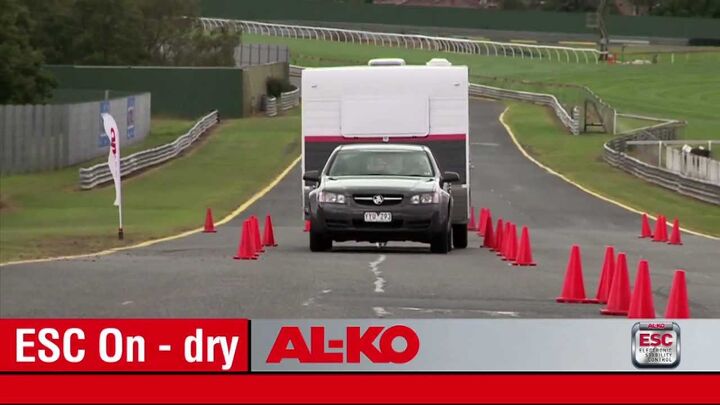#ElectronicStabilityControl
Ford and Stellantis Recall Bigger Vehicles for Smaller Problems
Ford and Stellantis are issuing recalls on some of their biggest models — figuratively and literally — this week. But the issues are quite a bit less dire than the repeat fire risks you’ve probably grown accustomed to. These defects will still allow customers to park their vehicle indoors without fear of awakening to a raging inferno emanating from the garage. Owners could probably even get away without having their cars fixed by the manufacturer until the relevant parts actually started breaking. Though why anybody would turn down free repairs on any component that didn’t pass muster is beyond me.
Impacted vehicles include 2021-22 model year Dodge Durango SUVs, 2019-22 MY Ram 2500 pickups, and 2019-22 MY Ram 3500 Chassis Cab trucks with a gross vehicle weight rating (GVWR) under 10,000 pounds, all with bunk electronic stability control (ESC) warning lights. According to the National Highway Traffic Safety Administration, an estimated 375,000 vehicles should be affected. Meanwhile, Ford is only looking at 175,000 units of the 2021 F-150 pickup with bum wiper motors.
Plow King: Electronic Nannies Give Jaguar I-Pace a Black Eye in Moose Test
Jaguar’s electric I-Pace (not to be confused with the gas powered E-Pace) earned unflattering press this past summer after slow sales led to ballooning inventories of the brand’s first EV. Now, there’s another PR stroke against the model, and electricity once again lies at the core of the issue.
As new safety features proliferate across the industry, electronic stability control stands out as one of the veteran lifesaving nannies, joining the fray after anti-lock brakes, airbags, and crumple zones became the norm. In the I-Pace’s case, ESC conspired to turn the model’s “moose test” into a viral sensation.
Piston Slap: Save Bacon or Save Face?
Isaac writes:
Recently my family was sitting around the table discussing how my youngest sister will obtain her driving permit in a month to begin the wonderful process of becoming a licensed driver. The interesting part of this conversation, and the part I hope you can offer some advice, is when we talked about safety. Are modern cars too safe for beginner drivers?
While many publications and parents say new drivers should be placed in the safest vehicle possible, I have struggled with this concept and can only wonder how safety equipment in car affects new drivers. Comparing the two vehicles that my parents are considering giving to my youngest sister, my older sister’s 2002 Saturn SC2 or my mom’s old 2008 Ford Taurus X, there is a big difference in the safety between these cars. My sister and I were given cars that lacked ABS, side or curtain airbags, ESP, and traction control. Not having features, like AB, taught my sister to be more attentive in slippery conditions.
While I will not argue against the safety these systems provide, nor their existence, I can only wonder if we are hindering the drivers of tomorrow. I wonder how modern features like blind spot monitoring, radar based cruise control, and backup cameras will affect new drivers. Personally, I like to think I am a better driver today because of the lack of safety features I had in my first couple of cars.
Any thoughts?
Who Needs Naders? We Have Cyborgs!
Yesterday, TTAC’s daily news editor Aaron Cole wrote an editorial calling for a new Ralph Nader to arise and save us from our own refusal to make appropriate safety-related automotive choices. I found the article fascinating, not least because one of my first editorials for TTAC was a skeptical look at the benefits of so-called “advanced driver training”. In that editorial, I argued that the decision to purchase a safe car was far more critical to crash survivability than any amount of special training would be. I then proceeded to prove my own point by selling my Phaetons, buying a Lincoln Town Car, and experiencing an incident (direct, high-speed perpendicular impact to my passenger door) that would have been trivial in said Phaetons but which was crippling in the aforementioned Town Car.
Since then, my thoughts on road safety have primarily centered around the idea of risk reduction. I believe that if you cancel or modify your riskiest trips, you’ll see tangible benefits from doing so. I don’t put my son in the car with me unless I have a specific agenda in mind to minimize risk from that trip. My goal is to reduce his exposure, which means no unnecessary trips, no bad-weather trips, and no trips without a plan.
On the other hand, this past year I put about half of my commuting mileage on motorcycles. That tilts my overall risk profile pretty far away from “safe”. It has, however, allowed me a front-row seat for all sorts of traffic incidents and accidents, playing out in full widescreen all around me.
For those reasons, I’m inclined to disagree with Aaron a little bit when it comes to the role of the government and/or quasi-governmental activists to improve vehicle safety. I’ll explain.
Electronic Stability Control Required On All Heavy Trucks, Large Buses By 2017
Two years from now, all heavy trucks and large buses will be required to equip electronic stability control per a new rule from the NHTSA.




















Recent Comments